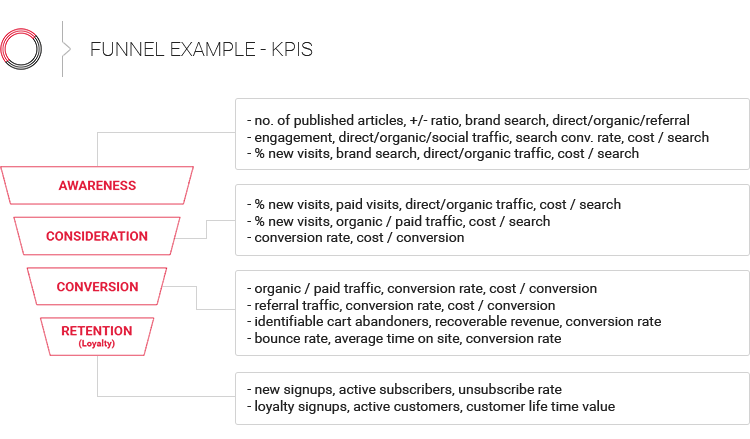Select Sidearea
Populate the sidearea with useful widgets. It’s simple to add images, categories, latest post, social media icon links, tag clouds, and more.


hello@youremail.com
+1234567890
+1234567890
Populate the sidearea with useful widgets. It’s simple to add images, categories, latest post, social media icon links, tag clouds, and more.


Iztok Franko

Welcome to the fifth installment in our Airline UX Series in partnership with 815Labs!
Throughout this series, we’ve explored insights from UX strategists, digital product leaders, UX mentors, and ecommerce experts. Now, it’s time to add a crucial missing layer to the conversation: data.
To dive into this essential topic, we spoke with someone at the forefront of collecting, analyzing, and measuring UX for one of the world’s largest airlines—Turkish Airlines.
Today’s guest, Kamran Emre Sayın, and his digital analytics team recently completed a sophisticated implementation designed to help Turkish Airlines measure the performance of their digital channels, products, and user experience in unprecedented detail.
Naturally, we couldn’t pass up the opportunity to invite Kamran to share his insights and experiences for this series.
Listen to the new episode of the Diggintravel Podcast about data-driven UX, digital analytics, measuring and improving airline digital products, and the impact of AI on analytics. Or, read on for key highlights from our talk with Kamran:
And don’t forget to subscribe to the Diggintravel Podcast in your preferred podcast app to stay on top of the latest airline UX, digital strategy, marketing, data science and AI trends!
To understand the importance of digital analytics at Turkish Airlines, it’s crucial to start with their ambitious vision. The airline has set its sights on becoming a leader in digital innovation, aiming to rank among the top three digital airlines globally by 2033.
Achieving this ambitious vision relies on a strong foundation of data and analytics. Kamran emphasized that their team uses data not just to optimize conversion funnels but to enhance the overall user experience.
We support with data, and we improve the funnels – it’s not just the funnels. We improve the user experience. In order to improve the user experience, first you have to start with, what you should focus on?
For Turkish Airlines, data is the key to making informed decisions. As Kamran explained:
Data is really important. Why? Because you have to provide the correct insights to get the best action. To have the best prescription, you have to have the perfect diagnosis. And here, we try to provide clear insights.
Leading the Digital Analytics team at Turkish Technology, Kamran plays a pivotal role in optimizing online sales and enhancing the user experience.
I’m leading 11 people in digital analytics and martech technologies. Our main aim is to optimize online sales and user experience, with the help of the heirloom teams, of course. We focus on optimizing funnels, also conversion optimization, A/B testing. Both quantitative and qualitative analytics.
We pretty much depend on data – clean data, I should say. Generally, it’s our job to ensure the analyses are done with clean data. In order to do this, we made test automation. Turkish Airlines flies to more than 131 countries and has 16 different languages on the website, 8 different languages on the mobile app.

Source: loopdesignawards dot com
Turkish Technology plays a critical role in this ecosystem, acting as an in-house IT solutions agency that supports Turkish Airlines and other clients by implementing technologies and delivering actionable insights.
Turkish Technology acts as an agency, like IT solutions. We help them [Turkish Airlines] with the implementation, with the insights. Turkish Airlines is our customer, AJet is our customer.
The main reason I reached out to Kamran for a chat was his LinkedIn post about the complex digital analytics setup his team implemented at Turkish Airlines. One particular detail from his post stood out: his team managed to control more than 436 event-level dimensions and 439 item-level dimensions in the Ticket Purchase flow, with a minimum of 13 events per scenario, all automated without any manual effort.
Curious about the scope of such a complex implementation, I asked Kamran how long it took to reach their current setup.
Wow, good question. Our website changed a lot. Our technology is now transferring to a Web 4.0, so the technology behind it is changing. So we had to redevelop our data layer. It took a few months, I should say. But after that, the most important thing is to ensure that data remains the same. If something has changed, believe me, looking at 400+ dimensions in each step manually is a disaster. It’s quite a burden for us. We had to develop something that is automated, not prone to errors, and then we came up with the solution.
If you’re wondering why tracking all these dimensions and events is so important, Kamran explained how his team uses this data to deliver valuable insights and improve the user experience.
We provide different sort types, like people can look for the price or people can look for the time of the flight or the duration, if it’s a direct flight or a connected flight. Are they price sensitive, or are they time sensitive? So we measure all those dimensions and say, ‘Okay, these kinds of customers, these segments, generally are more focused on this side.’ Then we measure and conduct A/B tests and hopefully improve the conversion.
By analyzing these dimensions, Kamran’s team uncovered key insights for personalization
We provided the product team that the search criteria, like the pricing, duration, and time of flight, are really different according to each country, the geolocation of the country that the passenger logs in to the website from. That showed us that for each different country and for each different customer, we have to personalize the content.
This level of detail ensures that Turkish Airlines can tailor their digital experience to meet the diverse needs of their global customer base, ultimately driving better engagement and conversion.
Measuring performance across different platforms—website, mobile web, and mobile app—can be a significant challenge for airlines. Turkish Airlines tackles this by consolidating data to ensure cross-platform insights are seamless and actionable.
We use BigQuery. BigQuery is a great platform to combine all the data. Also, GA4 right now, after the Universal Analytics, GA4 is also mobile-friendly. You get all your active users, total users, sessions in one account. Also, it is good to track the cross-device interactions, which we have many. Most people who try to search for leisure flights, the weekend travelers, start with the mobile application. Then when they purchase, they transfer to desktop. I think – maybe I’m wrong – they feel more comfortable there. So it is really important for us to keep the cross-dimensional interactions.
Beyond measuring and consolidating data, Kamran’s team also supports other parts of the martech ecosystem to optimize campaigns and share insights with partners.
We also provide remarketing technologies, we implement through Google Tag Manager, Google ecosystem, Microsoft ecosystem, other ecosystems as well, in order to optimize the campaigns. Another aspect is we also provide data to our partners, like meta search or affiliates to optimize their campaign strategies, what they should focus on. We implement those solutions as well.
To make their data even more reliable, Turkish Airlines is planning to implement server-side tracking soon.
We will be implementing server-side analytics implementation pretty soon…It is more reliable. You don’t depend on the browser. You trigger the relevant tags from your servers, and the server collects the relevant event and dimensions. From that part, you collect your own data without relying on the browser… With server-side implementation, generally, from what I see, it increases the tracking of events by at least 5% or so, maybe 20%, some say. So I believe server-side tracking will help us a lot.
When Kamran talked about the vision for Turkish Airlines, he didn’t just focus on data; he emphasized the importance of actionable insights. This led me to ask whether his team’s role extends beyond simply providing data to supporting Turkish Airlines’ digital, UX, and other teams with actionable recommendations.
We come together with the business teams, the product teams, the marketing maybe. When we provide insights to them, they come up with the solution, but the solution is mutual. We also provide ideas, like ‘Why don’t we test this?’ Then we conduct the A/B tests. So it’s teamwork. Like a football match; you can’t just rely on the striker. You have to pass the ball to the striker. There is a good team collaboration in Turkish Airlines.
This collaborative approach ensures that the data collected doesn’t just inform but drives optimization and innovation across Turkish Airlines’ digital ecosystem. Kamran shared a couple of examples to illustrate how actionable insights led to measurable improvements:
I could give two examples. One is on the check-in page, where we suggest customer ancillary services. We conducted an A/B test there and see, if the banner is changed, do they go to the ancillary page? The second one was telling the passengers, ‘You have this much time left to do your check-in,’ to ensure urgency. Like, you can do your check-in until that time. This improved our conversion rate of check-in.
As a next step, Kamran and his team are planning to take their insights even further by integrating qualitative analytics, adding another dimension to their data.
We use GA4 in quantitative analytics. It’s a great solution. But we also need qualitative analytics, like session replay and heat maps. This is important – GA4 can give us the answer of what has happened, but we need to get the answer of why and how.
So we need a session replay tool and we need heat maps, and hopefully it will be concluded soon, so we will also be able to do our qualitative analytics pretty soon, like in a month or so, hopefully. We will first look at GA4 and see the conversions and other stuff, then move to the qualitative analytics tool, session replay, and why it has happened, what the customers or passengers have encountered.
By combining quantitative insights from GA4 with qualitative tools like heat maps and session replay, Turkish Airlines aims to uncover the “why” behind user behavior, leading to even better user experience optimization.
Listen to the full podcast chat with Kamran to gain detailed insights into:
To dive deeper into these topics, make sure to listen to the entire podcast. You can access it through the embedded podcast player in this article or on your favorite podcast platform.
If you want to learn from leaders like Kamran about airline UX, digital analytics, digital optimization, data science, and AI, or just want to be the first to know when our next Airline UX Series interview will be published, please:
I am passionate about digital marketing and ecommerce, with more than 10 years of experience as a CMO and CIO in travel and multinational companies. I work as a strategic digital marketing and ecommerce consultant for global online travel brands. Constant learning is my main motivation, and this is why I launched Diggintravel.com, a content platform for travel digital marketers to obtain and share knowledge. If you want to learn or work with me check our Academy (learning with me) and Services (working with me) pages in the main menu of our website.
Download PDF with insights from 55 airline surveyed airlines.
Thanks! You will receive email with the PDF link shortly. If you are a Gmail user please check Promotions tab if email is not delivered to your Primary.
Seems like something went wrong. Please, try again or contact us.


No Comments